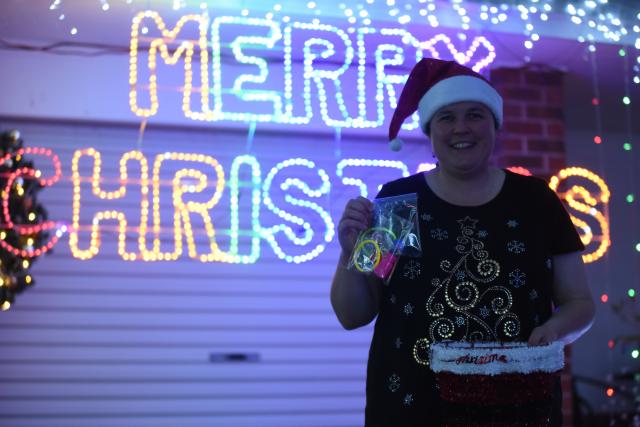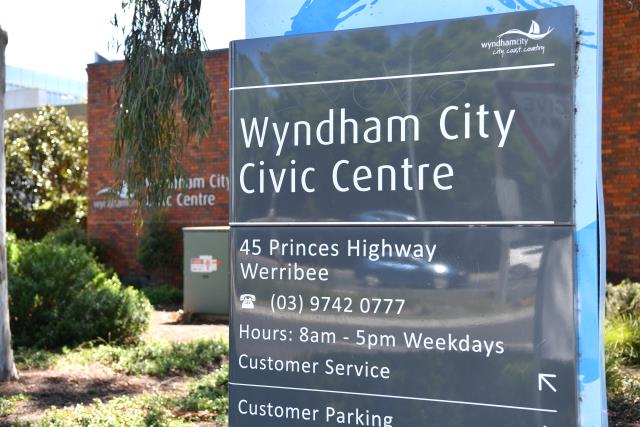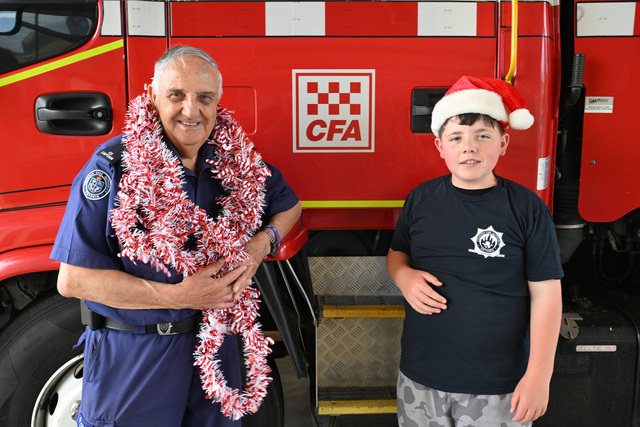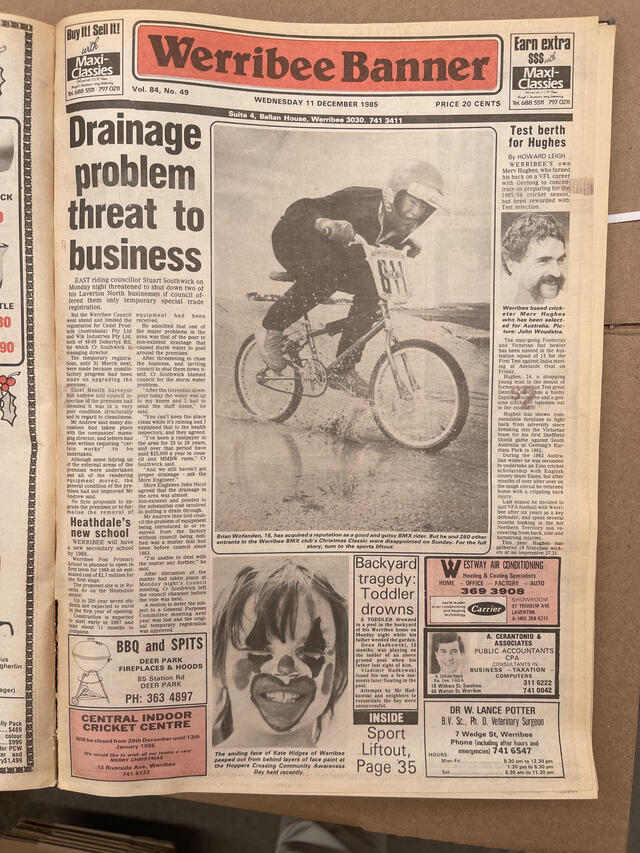Christmas lights … let’s think about the concept.
Why is Australia so big on them?
Most people, if you ask them, mention children when thinking about why they go to the effort of decorating their house with Christmas lights.
Of course, we want our kids to have the wonderland that we remember as a child at Christmas time. But what else lies beneath this Australian tradition?
And is it Australian or, like Halloween, has our culture been influenced by American culture when it comes to Christmas light displays?
When I asked one lights enthusiast how long he’d been working on setting up his display, he said they started about a month ago.
Wow! That’s a lot of time invested in decorating your house for a temporary amount of time – only to pack it all away again in a few weeks.
Imagine landscaping a garden for more than a month … and then after three weeks ripping it all out again.
What makes people do this?
It has to be psychological. A labour of love.
The passion has to come from within – an intrinsic motivation to want to provide an experience – or make something useful out of one’s home, that others can appreciate.
And not just the children.
Does it go back in time and a matter of testing one’s upper limits?
How many lights? How treacherous a position can I place myself in?
Colorbond knows it. They know there’s an existing Aussie culture of how good your humble home looks.
It was a smart marketing move.
Then again, most genuinely want to bring great joy and happiness to their kids.
A colleague confided she did it for that purpose.
“We decorated our house so beautifully for several years … until Santa delivered new Beagle puppies and they ate all the wiring for the Christmas lights in one afternoon when we left them in the courtyard.
“The cost for replacement made us reflect about the on-going commitment.
“Nope. More important things to spend money on … and the boys were growing up.
“Grinch-like thinking really.’’
And people with Christmas house light displays are the antithesis of The Grinch aren’t they?
They’re showing everyone that they are willing to invest hard-earned cash and many hours of their creative labour to make the world a better place for a few weeks.
Like an architect friend said on Saturday morning: “It’s so nice to focus on something positive for a change.’’
And that’s his motivation for wanting to decorate his place.
He said that, especially over the past few years, people need this.
We all need something enjoyable and uplifting to experience.
I love the mums and dads that really have done it for their kids though.
One couple with a two-year old were immersed in his experience.
They even brought his dinner outside so they could sit among the fairy lights and get on with life amid the magic. And they were working on the lights.
There was another whose wife was away with work, and he told me they set up the display together.
They have been decorating for six to seven years and renewing items over the time, upgrading and developing themes. All the while they have been doing it for the children and others in the street.
So it’s also a bonding experience – creating something rewarding and beautiful with your partner or family.
Although I did laugh when we asked one dad if the kids helped.
He laughed and said ’’they try to.’’
Maybe one of the children will become a sparky in the future.
Imagine that – passionate parents inspiring their kids with a career in either design, architecture, electrical ingenuity or theatre and movie set construction, all through building the Christmas light display year after year.
I can see that happening.
What also struck me were the older people. Why do they go to such great lengths?
I’d love to ask them … but I think we know.
They get great personal joy being able to bring happiness to others … particularly grandchildren.
Maybe their children have flown the nest and this is their way of staying young – staying in touch with the ’life’ that youth brings.
A way of triggering the enormous health benefits from seeing the happiness you’ve created. Like singing for people or cooking a meal to be shared.
The couple in the computer business were the same. They were enjoying watching us exploring their creation.
It’s like an amateur art gallery. If you can’t paint … decorate your house.
Maybe our affection for Christmas lights is because Australia is so isolated – we can’t experience the grandeur of a white Christmas like in Canada, Great Britain or Central Europe.
Then again, we are so geographically dispersed across this great brown land that we need to make our own special little Christmas world.
We like shiny things such as fireworks, so are we naturally attracted to creating fantastic light displays?
It is a way to express our sense of humour and sense of the ridiculous as well as pay tribute to the true meaning of Christmas.
To the journey we are all on. Where we’ve been. Where we’ve come from. And where we are heading.
It’s a time to reflect, to share love and respect for our loved ones.
Christmas lights take me back to being a child, the selection of the tree branches from the back paddock on the farm.
That was generally on the last day of school, and then there was the excitement of decorating the tree with tinsel, stars, bells and paper chains – the ones we had made in class.
There was the growing expectation of Santa coming, Christmas lunch or dinner, present giving.
Everyone was happy … a time of goodwill, a celebration. It just makes you smile.
So, do we equate the lights with the birth of Jesus Christ or take a broader look?
And how do we equate the way we have included such things as Santa Claus or Father Christmas into such things as tractors, diggers, bobcats, kombi vans, jet skis and riding on sharks?
There is definitely a reflection of the Aussie sense of humour – not taking ourselves too seriously. Yet all the while we pay respect to tradition with nativity scenes, the three wise men, the bright star of Bethlehem.
A lot of different cultures share a common theme or legend, and some of those have melded into what we now have.
Sinterklaas, it seems, is based on the historical figure of Saint Nicholas, who was born in 270AD in a region of Greece that is now part of present-day Turkey.
He went on to help the poor and sick, later serving as a bishop.
The Finnish equivalent for Father Christmas, Santa Claus or St Nicholas is Joulupukki, who was clad in a thick fur-lined coat turned inside out.
Starting his journey from his home in Lapland, Joulupukki travels in a sleigh drawn by reindeer but they do not fly.
Joulupukki would knock on the door and ask: “Are there any well-behaved children here?”
Meanwhile Sinterklaas would ride a white horse through the air.
He was always accompanied by two black ravens, and these helpers would listen, just like Zwarte Piet in Dutch tradition, at the chimneys of the homes they visited – to tell about the good and bad behaviour of those below.
The connection to Christmas of the three wise men following the light in the east is also surrounded by conjecture.
I thought the Star of Bethlehem was in the east but the Christmas carol suggests different: “westward leading, still proceeding, guide us to thy perfect light.“
And the three kings were religious scholars known as the Magi – revered Babylonian astronomers and astrologists.
A rare cosmic event in which three stars or planets lined up together could have been what started them on a journey to find a newborn king.
A favourite tribute to Christmas in Australia, for me, was while on a road trip up through centre of New South Wales and Santa was on the roof of a house, fishing. He had caught a gum boot.
Another contact admitted that Christmas lights were “a bit of a disease … one that can’t be cured.’’
It started with lights along the gutters and then it grew. They started making their own stars, then other things.
They went to buy four tiny stars to put on the house but ended up creating other objects that were lit up with solar.
Then they saw giant-sized Christmas presents that lit up, but were too big for the car.
“That’s alright,’’ the shopkeeper said in the Christmas spirit, “I’ll drop them in tomorrow.’’
At a number of homes there are Santa’s sleighs for the children to sit in and create photo opportunities.
This year we have Southern Hemisphere versions of Christmas with penguins, kookaburras and kangaroos.
We have Antarctica with sharks, and a set from the movie Frozen created by hand. This along with the Grinch family and Santa emerging from an outback thunderbox.
Another has everything from dinosaurs to a shed containing Santa’s sleigh and a miniature town with active carousels, ice skating rinks, a train set and lighthouse.
Some had simple themes but that had high appeal with young children identifying the figures … Santa, reindeer, a snowman.
One included a cancer corner, an area to reflect on the issues people face every day.
Another comes complete with a rusted ute and the Aussie Jingle Bells song by Colin Buchanan and Greg Champion.
You know the one: “Dashing through the bush, In a rusty Holden Ute, Kicking up the dust, Esky in the boot …’’
A good friend, who was born in Italy, thinks it’s hilarious.
They don’t do it in Italy – probably due to the time-honoured religious observance of the mother and child.
He finds it so funny, and sends pictures to his brother of it .
He also finds it intriguing that we go around and look at the houses of others.
Yet that’s what we do.
Just thinking about the lights and those who go in one car with friends, family and work colleagues to make a “night” of it.
Those boys who dressed for it … it’s like Melbourne Cup day when anyone can be a winner.
There’s a bit of that “everybody can do this … you don’t need to be rich.’’
The egalitarianism that is still present in Australian culture – where everyone is equal.
It’s about a community that has somehow ended up on the same page, deciding to create a magic wonderland for families to immerse themselves.
As a child, there used to be trips into the city to see the lights in the streets and the shop windows, especially the department stores.
There is still that sense of Christmas when miracles can come true, people can extend the hand of goodwill.
This year we have seen displays where you need to get out of the car and into the grounds of the house to experience it and investigate the quirkiness.
A butterfly and snail created out of old tyres to use in the garden.
Tributes to Australia and to Europe side by side in the same setting. The Eiffel Tower on one side and a giant kangaroo the other, cockatoos in trees and swans gliding on a stream.
This broad range of themes are brought together by a variety of Christmas light aficionados.
Is that it?
Can you hear the drum Aficianado?
No, it’s Fernando.
That’s it, our love affair with Christmas lights could be simply because we are, as a nation, so big on Abba.







